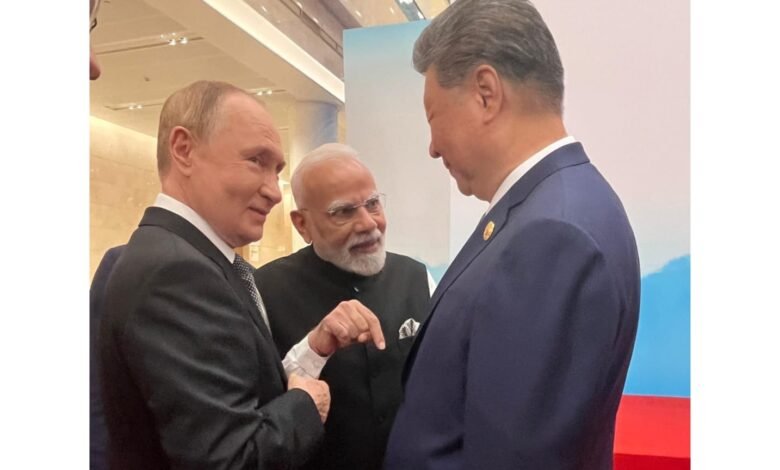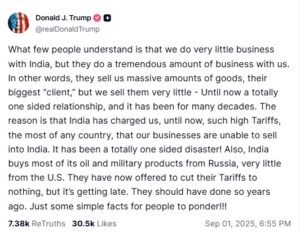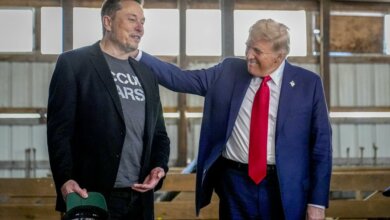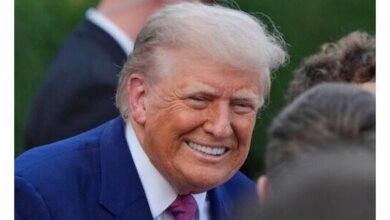Trump Slams ‘One-Sided Disaster’ in US-India Trade Relations Amid SCO Summit Aftermath

Washington, D.C.: President Donald Trump took to Truth Social to denounce the United States’ trade relationship with India, calling it a “totally one-sided disaster” that has persisted for decades. The remarks follow the 2025 Shanghai Cooperation Organization (SCO) Summit in Tianjin, China, where Indian Prime Minister Narendra Modi met with Russian President Vladimir Putin and Chinese President Xi Jinping, showcasing strengthened ties among the nations. Trump’s comments spotlight escalating tensions in US-India relations, fueled by recent US tariffs on Indian goods and India’s continued reliance on Russian oil and military supplies.
The SCO Summit, held from August 31 to September 1, convened leaders from member states including Belarus, India, Iran, Kazakhstan, Kyrgyzstan, Pakistan, Russia, China, and Tajikistan. A widely circulated image of Modi, Xi, and Putin together underscored the summit’s focus on solidarity against a perceived US-led global order. Modi and Xi committed to resolving border disputes and enhancing cooperation, while Modi and Putin reaffirmed their “special relationship” amid India’s challenges with US tariffs over Russian oil imports. US Treasury Secretary Scott Bessent dismissed the summit as “performative” and labeled India, China, and Russia as “bad actors,” suggesting the event was a counter to Trump’s tariff policies.
In his Truth Social post, Trump highlighted the trade imbalance: “What few people understand is that we do very little business with India, but they do a tremendous amount of business with us. In other words, they sell us massive amounts of goods, their biggest ‘client,’ but we sell them very little.” He attributed this to India’s high tariffs on US goods, claiming they are “the most of any country,” hindering American businesses’ ability to compete in India.

Recent trade data provides context for Trump’s claims. In 2024, US-India goods and services trade reached $212.3 billion, up 8.3% from 2023. However, the US recorded a $45.6 billion trade deficit with India, with consumer goods making up 35% of imports. By June 2025, India’s exports to the US hit $8.3 billion, a 23.5% increase from the previous month, solidifying the US as India’s largest trading partner. India’s total exports reached a record $824.9 billion in FY2024-2025. Yet, the US trade deficit with India was the 10th largest among its partners in 2024 at $49.5 billion, with seven countries facing larger deficits receiving lower US tariffs.
Trump’s administration has responded with aggressive measures. In August 2025, the US imposed a 50% tariff on Indian goods, doubling the previous 25% duty, in retaliation for India’s purchases of Russian oil and weapons. This impacts over 55% of India’s $87 billion in exports to the US in 2024. Indian Trade Minister Piyush Goyal has vowed resistance, warning that the tariffs could devastate sectors like apparel, textiles, jewelry, and seafood, which account for about 20% of India’s GDP.
Trump also criticized India’s reliance on Russia for oil and military equipment. Russia supplies approximately 37% of India’s crude oil imports in 2025, up significantly since 2022. In the first half of 2025, India imported 1.88 million barrels per day from Russia, saving $17 billion through discounted purchases. Indian Petroleum Minister Hardeep Singh Puri defended the strategy, stating India buys oil “where we get the best deal” without breaking rules. Reliance Industries, led by Mukesh Ambani, plays a major role in these imports, with 2025 figures only 12% below 2024 levels.
Militarily, India remains the world’s largest arms importer and Russia’s top customer, though it is diversifying. US-India defense trade reached $146 billion by 2020 and was projected to exceed $200 billion by 2025 before the tariffs. Russia’s share in India’s arms imports has declined due to geopolitical shifts and supply issues, prompting India to explore alternatives.
Trump noted that India has “now offered to cut their Tariffs to nothing,” but called it “getting late” and something that “should have been done years ago.” Indian officials have not publicly confirmed this offer, but analysts suggest it may be an attempt to de-escalate the tariff war following the SCO Summit, where Modi emphasized self-reliance and multilateral cooperation.
The post has ignited debate in Washington and beyond. Critics argue Trump’s tariffs could harm US consumers and industries dependent on Indian imports, while supporters view it as a bold “America First” stance. India’s trade with Russia surged to $67.15 billion in 2024, mostly imports, leading New Delhi to accuse the US and EU of double standards, as they maintain significant trade with Russia despite sanctions.
As the fallout from the SCO Summit continues, US-India relations stand at a crossroads. Trump’s push for trade reciprocity risks straining ties with a key Indo-Pacific partner. Prolonged tariffs could erode India’s economic gains from Russian oil discounts and threaten millions of jobs in export-driven sectors. The SCO’s display of unity suggests India is positioning itself in a multipolar world, potentially complicating negotiations. Whether this leads to a breakthrough or further escalation remains uncertain, but Trump’s remarks have set the stage for a high-stakes showdown in global trade.




